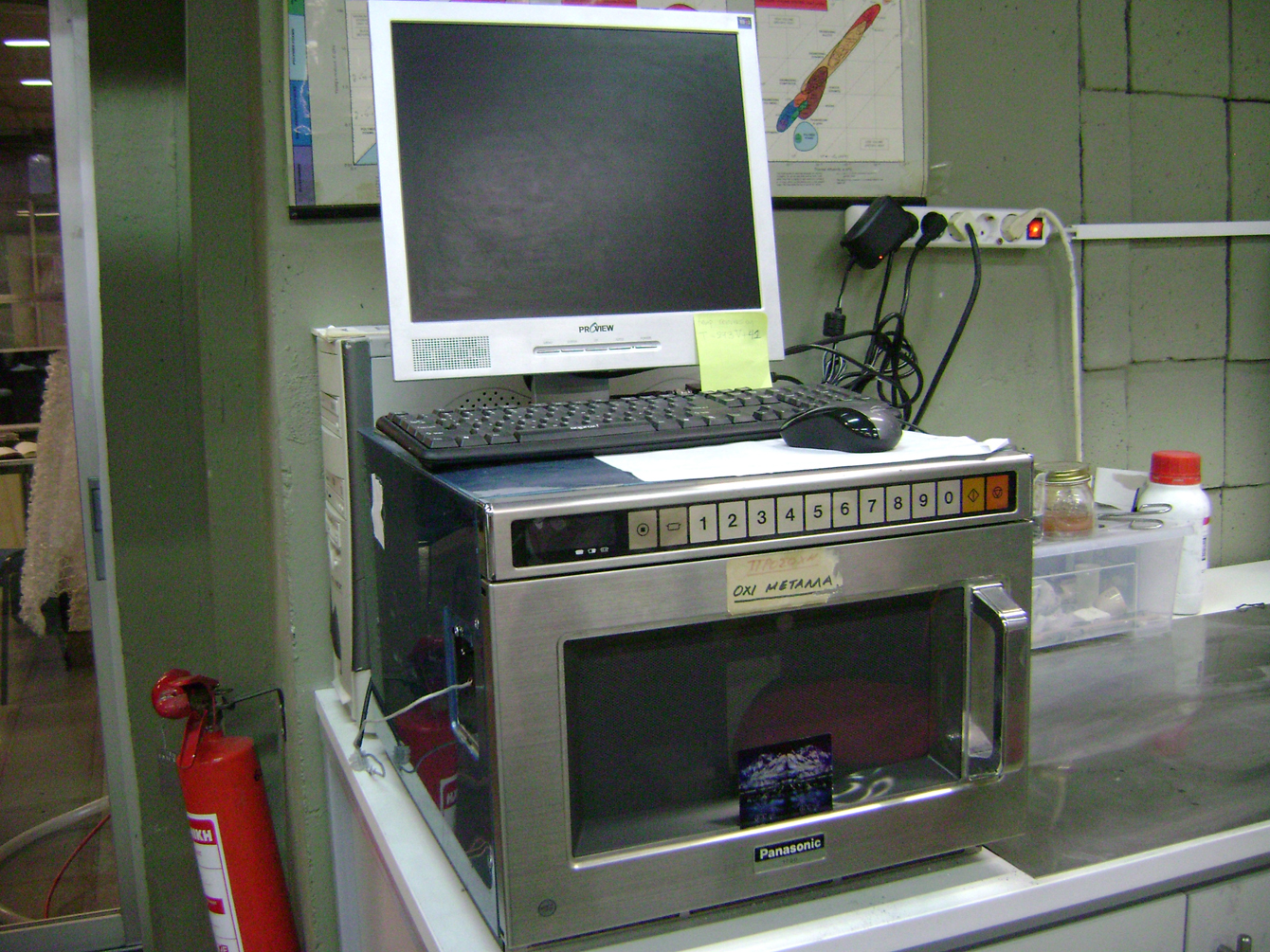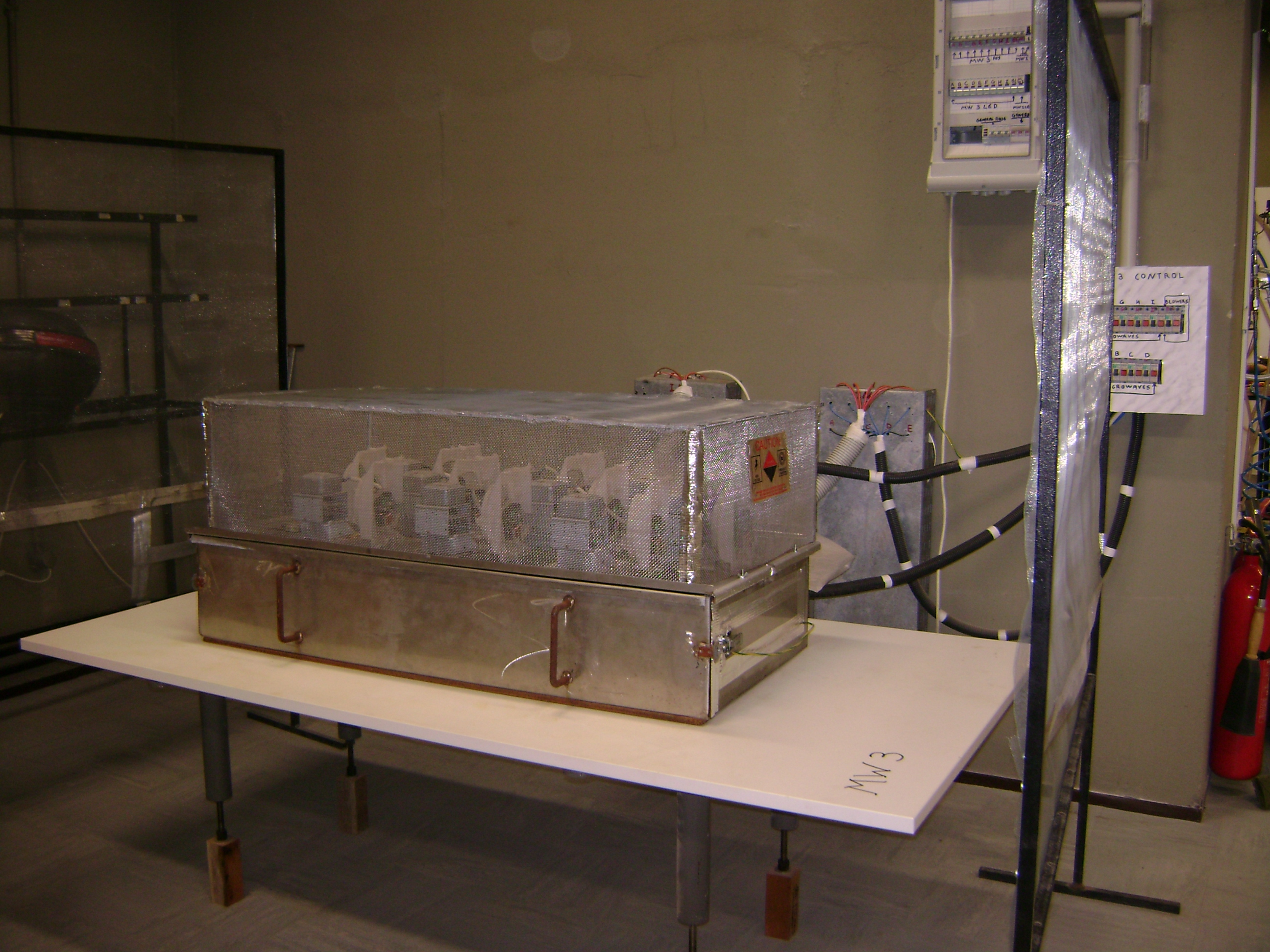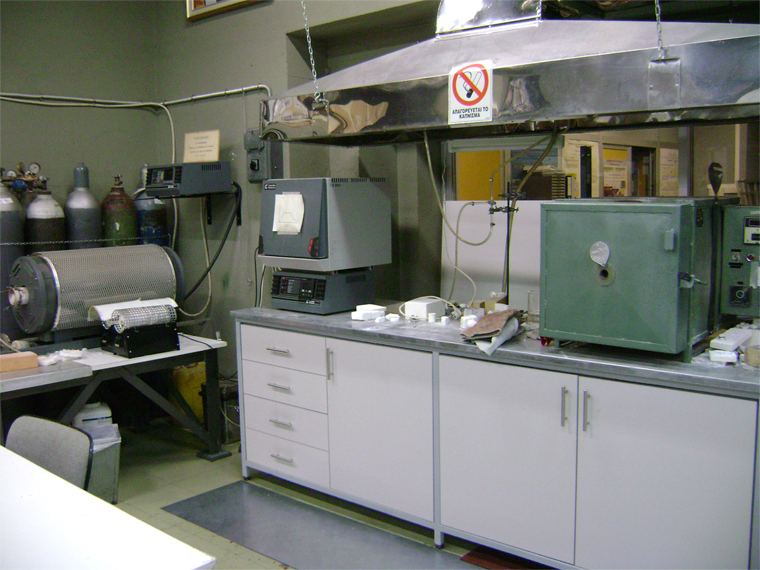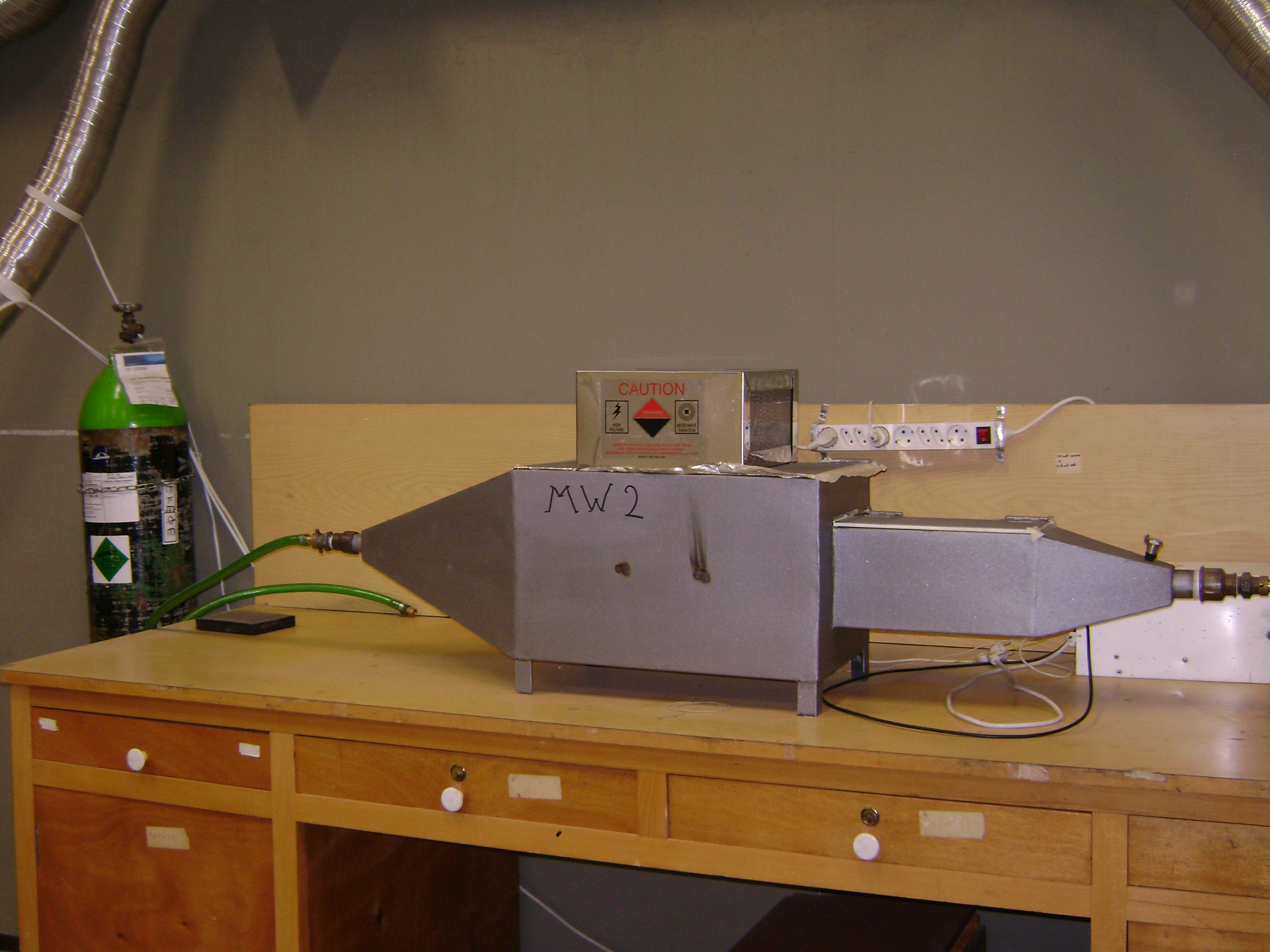Thermodynamics
Thermal treatments of materials
Our lab has a wide range of systems for thermal treatments of all kinds of materials in vacuum, air, oxygen, reducing gases and other controlled atmospheres. Our rquipment includes:
1) Cylindrical furnace up to 1600οC, internal diameter 75mm with many possibilities for vacuum, controlled atmospheres, including flowing gases etc.
2) Chamber furnace 1600οC, 20x20x30cm
3) Chamber furnace 1200οC, 30x30x30cm, with the capability for performing exothermic treatments and reactions. It can also carry out hot pressing to about 900oC.
4) Microwave furnace 1700W (κάτω) with inside specimen temperature recording on-line onto a PC.
5) Various small furnaces to 900oC for catalytic and other reactions.
6) Aging and drying oven.

Industrial microwave treatments
The laboratory has developed a range of microwave systems for industrial treatment of materials and products.
1) Industrial pilot system, 2.5KW for drying ores, lignite, clay etc using microwaves as the material moves on a conveyor belt, as shown on the right. This system has significant application in industrial factories where rapid drying of materials is necessary without interruption of production or the transfer of the material, e.g. from amine to the factory.
2) An 8kW chamber (below) for microwave treatment of larger and thicker products and materials. This system is useful in cases where the product thickness is over 5cm.


We have carried out a number of services for optimisation of thermal treatments of ceramics and composites ascarried out in production factories. For example, the partial inclusion of reducing conditions at specific points during the termal treatments can increase very significantly the mechanical properties of some special ceramic matrix composites.
Sintering of metallic (magnetic etc) powder compacts has been carried out in our Microwave furnace. Such tretaments can achieve sintering within a few minutes instead of many hours under normal treatments, using much lower energy (<10%). This has also been shown for sintering alumina ceramics and some intermetallic cobalt and nickel alloys.



